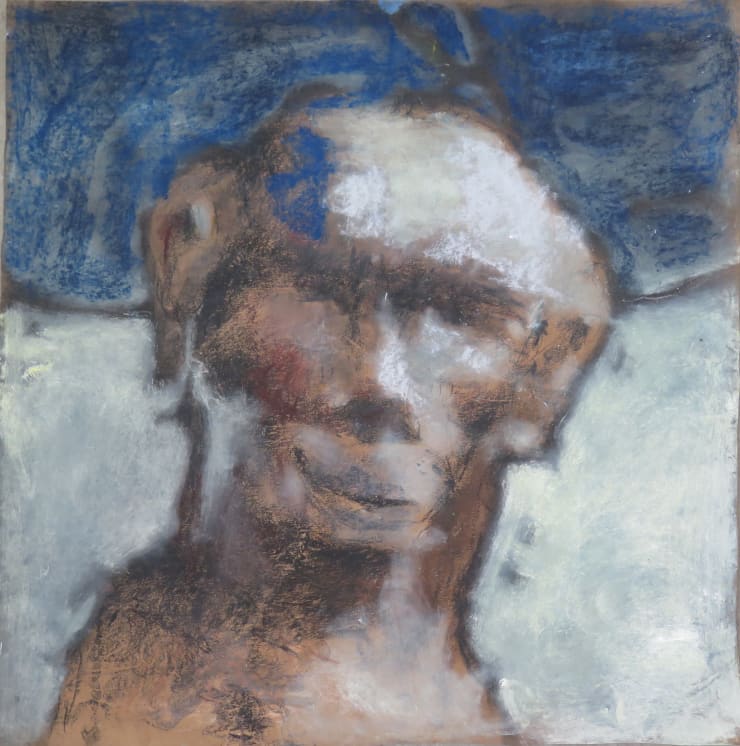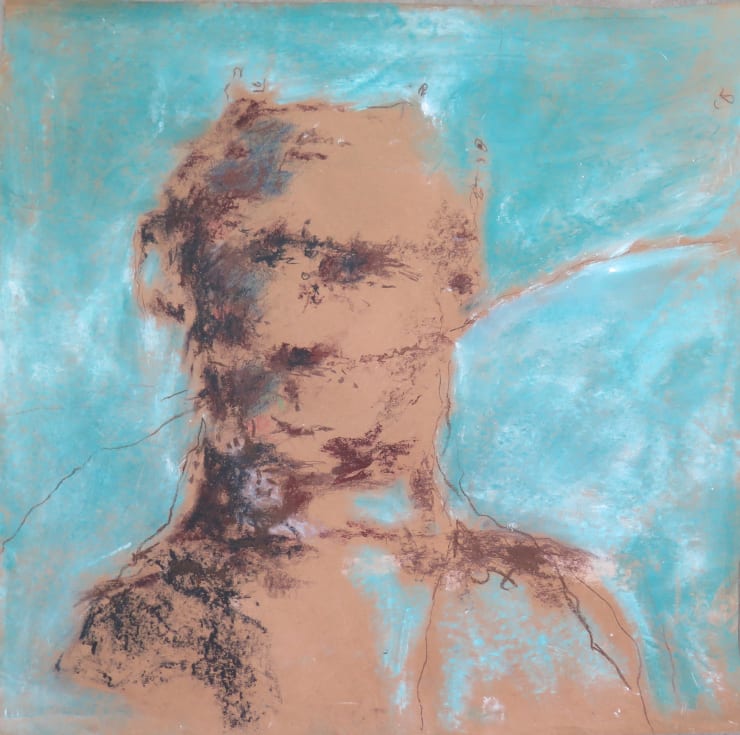-

-

The animal and man's connection to his animal nature is a central theme in my work. I believe that animals have had the misfortune of crossing species like us on their path, and that if we eat them, it is only to convince ourselves that we are not animals. We lie to ourselves, and I try to reveal this hypocrisy and inevitable duality in my painting. SO (Sadikou Oukpedjo)
"A bullock, a cockerel. A hen, or, rather, a guinea fowl. A nanny goat, a billy goat. Human bodies. Carcasses. Hybrid beings. A painting brought to life. Swathes of colour simultaneously blur and obscure the false clarity of the forms. A streaky or smudged blue. Bright white patches. A sombre, trans- parent and sometimes grainy grey. A colourful halo and yellow where feet are buried. Red spots. An opaque black paradoxically illuminates a strange scene. A red or bluish hue delineates new spaces. Shreds of pictorial matter congregate in an organised chaos. The painting therefore contrasts with the natural order of things. The dual presence of shapes and materials contributes to the intensity of Sadikou Oukpedjo’s large canvases : a space to show, tell and reflect. There are outpourings (of sympathy or pain). Above all there are mysteries, secret rituals, hidden things and the inexplicable. A whole mythology is at work behind the image, full of hybrid animals and enigmatic figures. In the face of death, do animals have a soul ?"
Excerpt of "The Animal that I am", by Seloua Luste Boulbina
The text of the exhibition catalogue of Silentium, by Sadikou Oukpedjo, which took place in Abidjan in 2019
The catalogue is available here.
-

-

-

-
Atelier de Sadikou Oukpedjo
2019, Bingerville, Côte d'Ivoire -

-

-

La sélection de / Sadikou Oukpedjo: Musique, lieux, art et philosophie
Past viewing_room





















